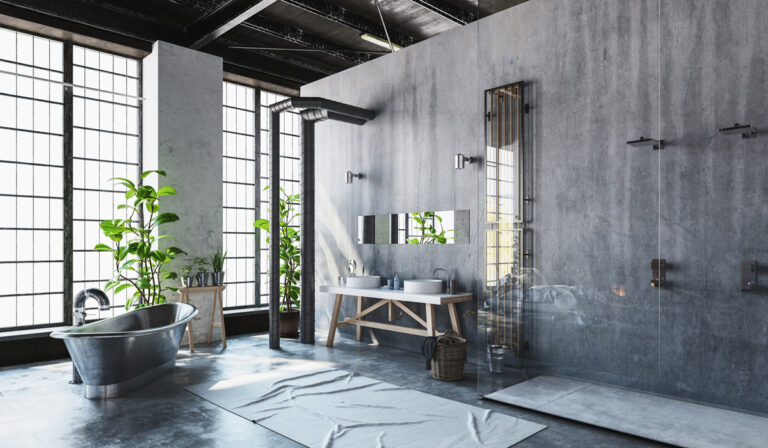There are certain events that change the entire course of history. One of them was, without a shadow of a doubt, the Industrial Spaces. It changed everything – from the way we live to the way we think. And even though it was so long ago, we’re still enjoying its benefits and facing the challenges that have only grown since. It brought about many changes, some rather surprising. Let’s take interior design – who could’ve predicted that industry professionals would fall in love with the raw aesthetic of old factories? Well, they did. Taking cues and drawing inspiration from those spaces, they repurposed the utilitarian vibe, embraced the key elements and decided to introduce them to houses around the world.
What’s Industrial Interior Design?
It’s all based on minimalist, open spaces – just like in the factories. Streamlined design with almost zero accessorising. Exposed brick, pipes, metal, and concrete with lots of light, since large windows play a big role in this design language. It’s raw, rough and straightforward. It was actually popularised in the 1970s, especially in loft-like spaces or repurposed old buildings. Now it’s pretty much a staple for modern office spaces, while certain cues and elements are clearly visible in clubs, restaurants and pubs.
Table of Contents
Industrial Hues
If you’ve ever seen any series or movies about working-class families and factory workers, you already know what we’re talking about. It’s always quite dark and gloomy. Even red brick walls don’t look bright and lively at all. And this is exactly the colour palette we can see in spaces inspired by Industrial design. Monochromatic hues, with greys, whites, iron blacks, some browns – and anything you can find on natural wood, concrete or brick, so red and orange are also an option.
Industrial Furniture
With furniture, we’re staying in the exact same theme. Forget elegant home furniture, wrought iron is an absolute staple and leather upholstery is a close second. Anything with that distinct raw look fits perfectly – like tables or chairs made from repurposed wooden pallets and cinderblocks. No shiny finishing, no flashy details. It’s all about the mixture of raw natural materials with other hard-wearing elements, like solid wood stools with sturdy metal legs. Vintage pieces will make a great addition to those spaces, especially with their naturally developed patina. Simplicity, sturdiness, and a mostly utilitarian approach to Luxury furniture design are the key features of the Industrial style.
Accessory Revolution
Even though accessories are not a big part of any minimalist space, they’re still extremely important to get that perfect Industrial look. If we want to stay faithful to the original idea, the number of accessories we can actually incorporate into our living spaces is rather limited. That’s why we have to be smart about it. Thankfully, lighting comes to our aid, as it’s a very important feature of Industrial spaces. Weathered-bronze fixtures, pendants and the famed floor or table lamps. Bare light bulbs, which are inspired by this exact same design language, are quite a big trend right now.
Adapting to New Reality
The truth behind Industrial design is quite simple. With plenty of factories shutting down, and cities growing in size, it was getting harder to build new homes. Also, what to do with all these buildings and Industrial Spaces that no longer serve their purpose? Sometimes they were destroyed completely, but very often the remedy was adaptation – simply repurposing these places into living spaces. And since it’s not exactly an ideal setting for elegant furniture, the designers had to think unconventionally. The answer was right there in front of them – they managed to capture the raw beauty of urban grit. After all, why destroy something that’s working pretty well?

